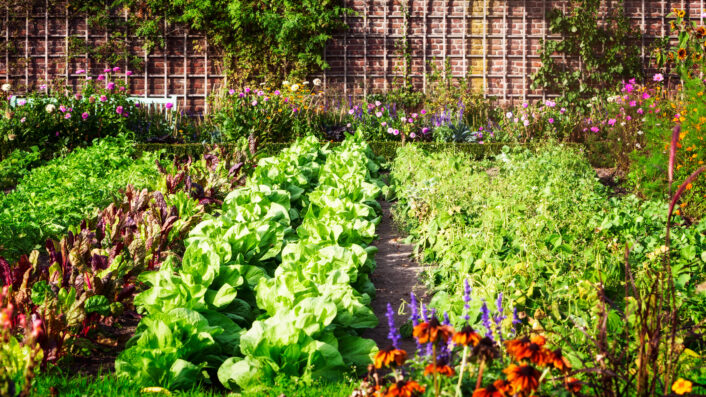She’s Teaching You Everything You Need To Know About Frost Zones So You Can Successfully Plan Your Garden

When planning gardens, knowing when to schedule your planting is crucial. If you plant too early, a surprise frost might appear and ruin all your efforts.
That’s why TikToker Megan Nicole London (@gardeningsimplified) is teaching beginner gardeners about plant types, growing zones, and frost dates before they even start buying their seeds or plants.
First of all, there are two different types of plants: annuals and perennials. Perennial plants come back every single year, while annuals need to be replanted annually. You need to know the difference between the two.
Then, you must figure out what hardiness zone you’re in and when your first and last frost dates are for your zone. Plant hardiness zones determine which plants are most likely to thrive in your area.
The U.S. is divided into thirteen zones. Zones ten through thirteen are the sub-coastal/tropical zones, so they rarely experience frost at all.
“Your plant hardiness zones pretty much pertain to annuals and perennials. And what it really keys in on is your perennials,” said Megan.
For standard vegetables in your garden, the growing season is short, so there’s no need to worry about plant hardiness zones. But for your annuals and perennials, the zones matter.
“Your last frost date comes first, as crazy as that sounds. Your last frost date is in the spring. Your first frost date is in the fall,” she explained.
On the back of your seed packets, make a note of how many days it takes to harvest a specific plant. Then, once you know your last and first frost dates, you can determine the number of days in your growing season.

Irina Fischer – stock.adobe.com – illustrative purposes only
As an example, Megan demonstrates how she plans to plant her carrots. She is located in zone seven.
Carrots prefer cooler weather and take 75 days to harvest, which means there is an opportunity to grow them in the spring or fall. Day one is when you plant the seeds, and day 75 is the day of harvest.
“So essentially, if I start these carrots March 22nd outdoors, they should be ready to harvest in 75 days, which comes to about May 31st to June 2nd,” said Megan.
“And this is pretty accurate. By June, it’ll be too hot to grow them, but I have a second opportunity in the fall,” she continued.
Overall, the number of days it takes to harvest combined with your first and last frost dates is the knowledge that holds the most importance when it comes to your garden.
@gardeningsimplified First and last frost dates are so important when planning your garden!! #plantingseason #gardeninghacks #gardeningtipsforbeginners #gardeningforbeginners #beginnergardener #gardentiktok
If true crime defines your free time, this is for you: join Chip Chick’s True Crime Tribe
This College Student Vanished In 1948 After Arriving On Campus For Her Summer Term
Myth Dispelled: Pregnant Women Do Not Have To Keep Their Heart Rates Under 140 BPM While Working Out
Sign up for Chip Chick’s newsletter and get stories like this delivered to your inbox.
More About:Gardening